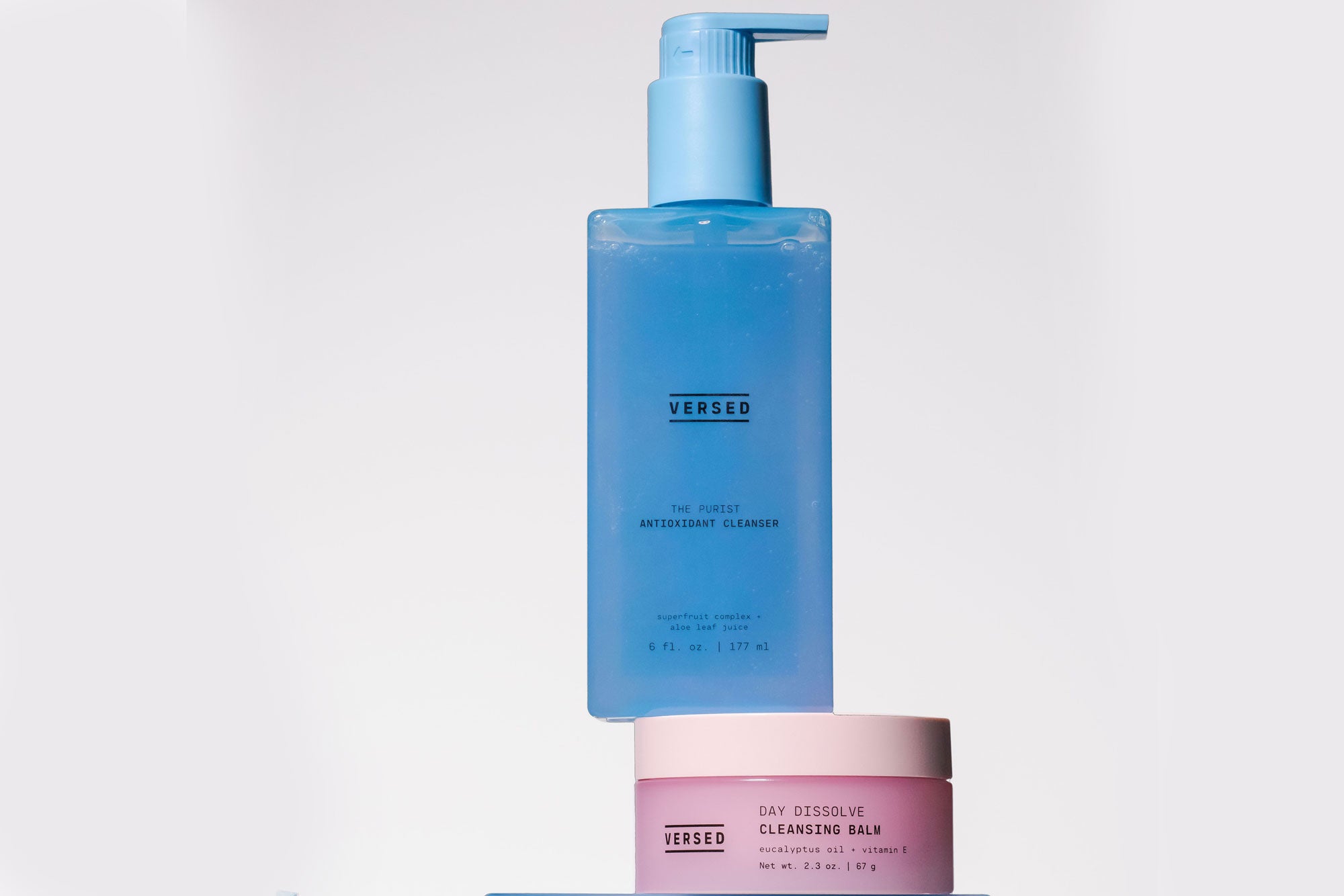
The Ultimate Guide to Double Cleansing
Every day, our skin comes into contact with a wide variety of both indoor and outdoor pollutants. Add makeup, sunscreen, and sweat to the mix and you can see what a big job your cleanser has. That's why Koreans (the very people who popularized the K-beauty double cleansing method), rely on this ritual as the first step in their famous multi-layered skincare routine. They firmly believe that double cleansing is the only way to create a completely clean slate for the rest of your products to work.
But should all skin types double cleanse, even those with dry complexions? What about if you’re not one to don a full face of makeup? We dive into what products you can use to double cleanse, the benefits of the practice, and whether you should consider making it a part of your daily routine or not.
What is Double Cleansing?
As its name implies, double cleansing is a two-step cleansing method. The first cleanse is oil-based and the second cleanse is water-based. Why two different types of cleansers? It’s simple science: Oil attracts oil and water breaks down water. If you stick with just a water-based cleanser, for example, you’re only washing away impurities that are water-soluble and missing the oil-soluble ones. When you double cleanse, you rid your skin of all residue, leaving nothing behind.
The Benefits of Double Cleansing
At the end of the day, your skin has been through a lot—much of which isn't even visible to the naked eye. Ever used a toner pad after you've washed your face and thought it was squeaky clean, only to look down at the pad to find residue leftover? Then you get it. Because double cleansing ensures all impurities are lifted, the practice benefits the skin in many ways. A good double cleanse can minimize the appearance of pores, prevent (and clear up) acne, and slow signs of premature aging. A clean slate also allows the remainder of your skincare routine to work even better; with truly clean skin and clear pores, the active ingredients in your serums and treatments can more effectively penetrate deep into the layers of the skin and work their magic.
Many assume double cleansing is only beneficial if you wear makeup, but because double cleansing also removes sunscreen (reminder: we should all be wearing SPF daily), sebum, and other oil-based pollutants, the practice is helpful whether you’re makeup-free or not.
How to Double Cleanse
How often you double cleanse is based on your individual skin needs, but we recommend incorporating it once a day during your PM routine. That’s when you’ll want to remove your makeup, sunscreen, and any other impurities that made their way onto the surface of your skin during the daytime. Double cleansing twice a day isn’t necessary, but oily skin types may find the practice helpful at controlling oil production. If you’re on the dryer side or acne-prone, cleansing too much may actually irritate your skin. Pay attention to how your skin reacts after double cleansing and decide the appropriate cadence for you. Here’s what products to use:
Cleanse #1: Oil-Based
The reason we start with an oil-based cleanser is the same reason we remove our makeup before washing our face. We want to remove all those thick, oily impurities before our regular cleanse. This is particularly important if your cleanser is designed for a specific purpose, such as our Acne-Calming Cream Cleanser—its salicylic acid and other acne-fighting ingredients won’t be able to do its job as well if makeup and sunscreen is standing in its way.
Like a magnet, an oil-based cleanser will suck up makeup, sunscreen, sebum, and other oil-based buildup. Good examples of oil-based cleansers are cleansing balms or micellar water (which is made up of tiny clusters of oil molecules). Our Day Dissolve Cleansing Balm is ideal for all skin types (yes, even the oily ones) and nourishes skin while washing away the day’s grime. If you have sensitive skin, you can also use our Milky Cleanser as your first wash. Just be sure to really massage it into skin for a good minute.
Cleanse #2: Water-Based
Next, use a water-based cleanser to sweep away the remaining water-based impurities including sweat, dead skin cells, dirt, bacteria, and pollutants. Any water-based cleanser will do, but we recommend one that is soap-free and pH-balanced, such as our Antioxidant Cleanser. Simply lather it up, massage it in, and spend a little extra time one those areas that tend to have clogged pores, like around the nose and chin. Finish with a rinse of lukewarm water to keep skin calm (especially important if you suffer from breakouts, rosacea, or eczema).
If you’re on the dryer side (or simply short on time), you may skip a water-cleanser altogether and opt for a cleansing toner instead. Our Baby Cheeks Hydrating Milk is easy to swipe on and will help remove any remaining impurities while also restoring skin’s pH and removing hard water residue. Shop cleansers below.


